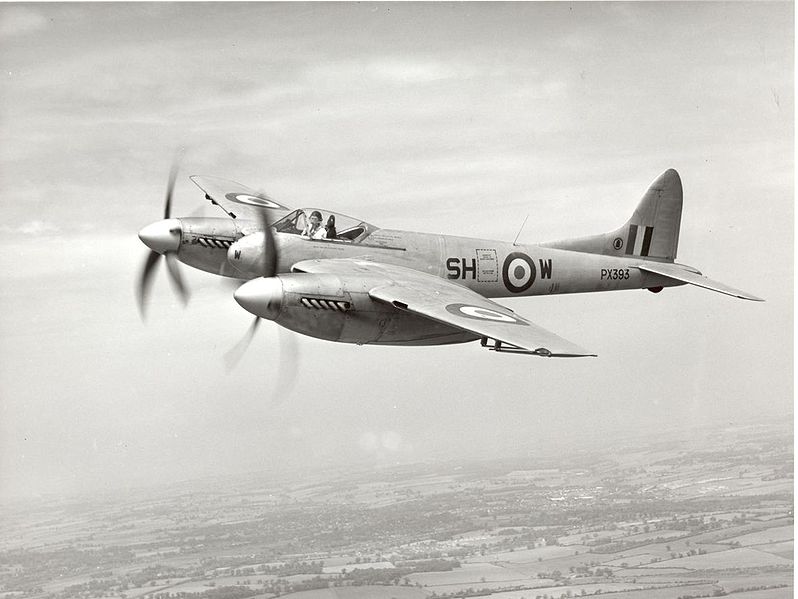

RAF Hornet Crashed Into East Coast Road
Friday, 10th August 1951
A twin-engine RAF de Havilland DH.103 Hornet, world's fastest piston-driven aircraft, crashed on the East Coast Road after performing aerobatics over the sea south of Katong. The British pilot was killed instantly and 8 people living in a row of houses opposite the crash were injured when the aircraft's fuel tank and ammunition exploded. A three-year old girl died five hours later and a two-year old boy a day later at Singapore General Hospital (SGH) from severe burns.
The crash made a hole in the road about 40 feet long, 15 feet wide and 8 feet deep. The force of the impact threw debris high in the air and as far as a hundred yards. One the plane engine was found in a lane behind the houses. The plane fuseluge caught fire was was put out by the Fire Brigade in about 20 minutes.

Photo Credit: Wikipedia.
The de Havilland DH.103 Hornet was a piston engine fighter that further exploited the wooden construction. Entering service at the end of the Second World War, the Hornet equipped postwar RAF Fighter Command day fighter units in the UK and was later used successfully as a strike fighter in Malaya and Singapore. Hornets participated in several record attempts and air races. In 1949 Group Captain A.P.C. Carver flew from Gibraltar to RAF Bovingdon, setting a new British point-to-point record, averaging 435.871 mph (701.466 km/h).
The de Havilland DH.103 Hornet that crashed in East Coast Road was attached to RAF Tengah Air Base.
